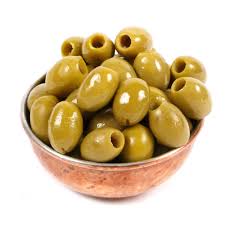Stamp: Olive branch (Tunisia 1957)
Olive branch (Tunisia 1957)
25 February (Tunisia ) within release Production goes into circulation Stamp Olive branch face value 15 Tunisian franc
| Stamp Olive branch in catalogues | |
|---|---|
| Michel: | Mi:TN 474 |
| Yvert et Tellier: | Yt:TN 429 |
Stamp is square format.
Also in the issue Production:
- Stamp - Olive branch face value 15;
- Stamp - Bunch of grapes face value 12;
|
Data entry completed
46%
|
|
|---|---|
| Stamp Olive branch in digits | |
| Country: | Tunisia |
| Date: | 1957-02-25 |
| Perforation: | 13 |
| Format: | Stamp |
| Face Value: | 15 Tunisian franc |
Stamp Olive branch it reflects the thematic directions:
Food is any substance consumed by an organism for nutritional support. Food is usually of plant, animal, or fungal origin and contains essential nutrients such as carbohydrates, fats, proteins, vitamins, or minerals. The substance is ingested by an organism and assimilated by the organism's cells to provide energy, maintain life, or stimulate growth. Different species of animals have different feeding behaviours that satisfy the needs of their metabolisms and have evolved to fill a specific ecological niche within specific geographical contexts.
A hand is a prehensile, multi-fingered organ located at the end of the forearm or forelimb of primates such as humans, chimpanzees, monkeys, and lemurs. A few other vertebrates such as the koala (which has two opposable thumbs on each "hand" and fingerprints remarkably similar to human fingerprints) are often described as having "hands" instead of paws on their front limbs. The raccoon is usually described as having "hands" though opposable thumbs are lacking.
Flora is the plant life occurring in a particular region or time, generally the naturally occurring or indigenous—native plant life. The corresponding term for animal life is fauna. Flora, fauna and other forms of life such as fungi are collectively referred to as biota. Sometimes bacteria and fungi are also referred to as flora, as in the terms gut flora or skin flora.
The olive, botanical name Olea europaea, meaning 'European olive', is a species of small tree or shrub in the family Oleaceae, found traditionally in the Mediterranean Basin, with wild subspecies found further afield in Africa and western Asia. When in shrub form, it is known as Olea europaea 'Montra', dwarf olive, or little olive. The species is cultivated in all the countries of the Mediterranean, as well as in Australia, New Zealand, North and South America and South Africa. It is the type species for its genus, Olea. The tree and its fruit give their name to the Oleaceae plant family, which also includes species such as lilac, jasmine, forsythia, and the true ash tree.




